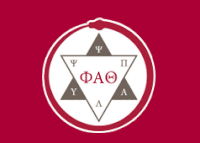Abstract
From May to October 1853, the city of New Orleans, Louisiana, battled a terrifying epidemic of yellow fever. This paper examines the spread of the disease, the death toll as the epidemic continued, and the political, medical, and social effects of this particular epidemic. Several thousand individuals succumbed to yellow fever between May 28 and October 8, 1853, and over 8,000 of these died. The medical, political, and social views on yellow fever varied by region, but all held that it was a mysterious and terrifying disease that carried off an excessive number of individuals. The 1853 yellow fever epidemic in New Orleans influenced political change and stirred up social tensions. However, while it was a significant medical issue, treatment made little to no advances.
Recommended Citation
Iker, Molly
(2012)
"Hard Times in the Big Easy: The Medical, Social, and Political Effects of the Yellow Fever Epidemic of 1853 in New Orleans,"
Voces Novae: Vol. 4, Article 7.
Available at:
https://digitalcommons.chapman.edu/vocesnovae/vol4/iss1/7


